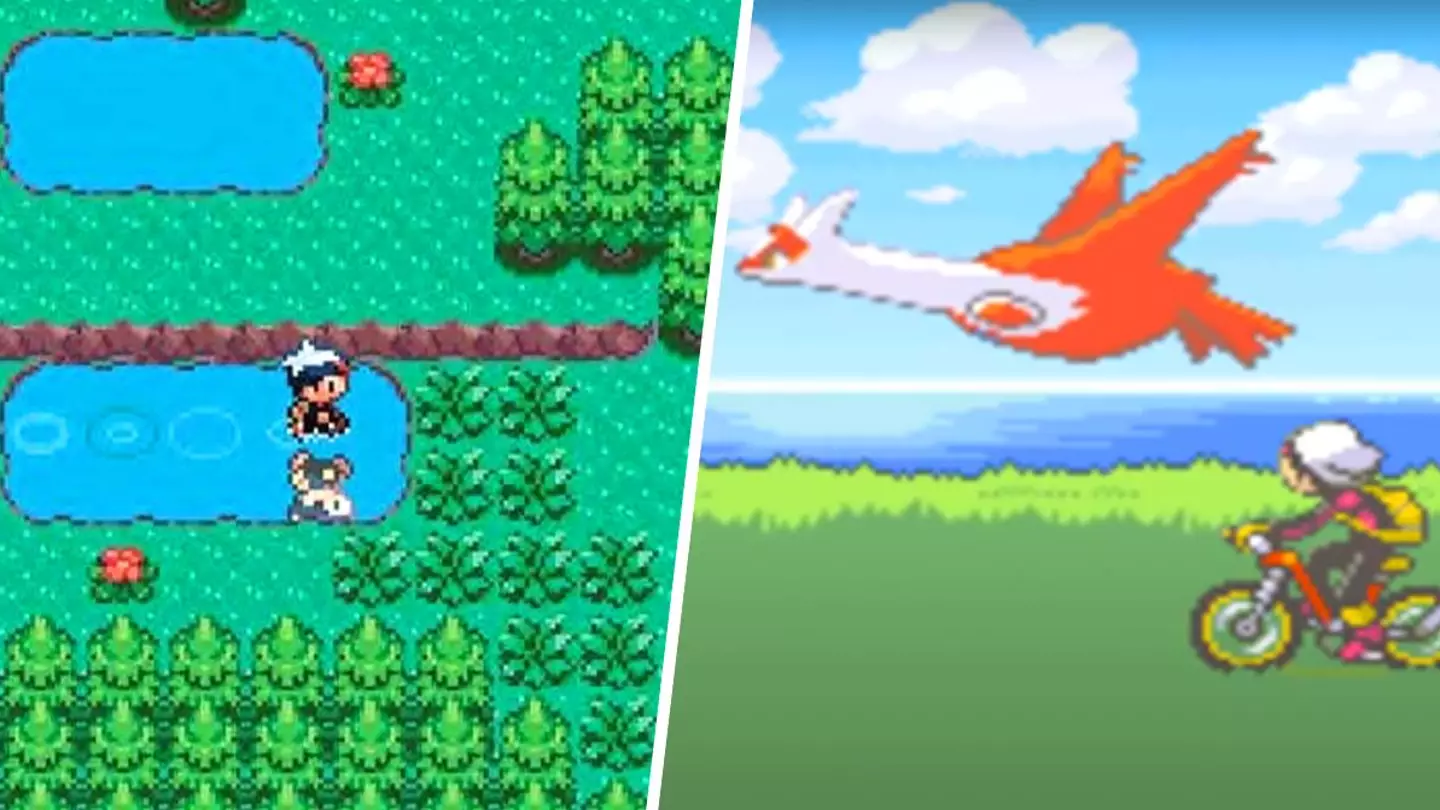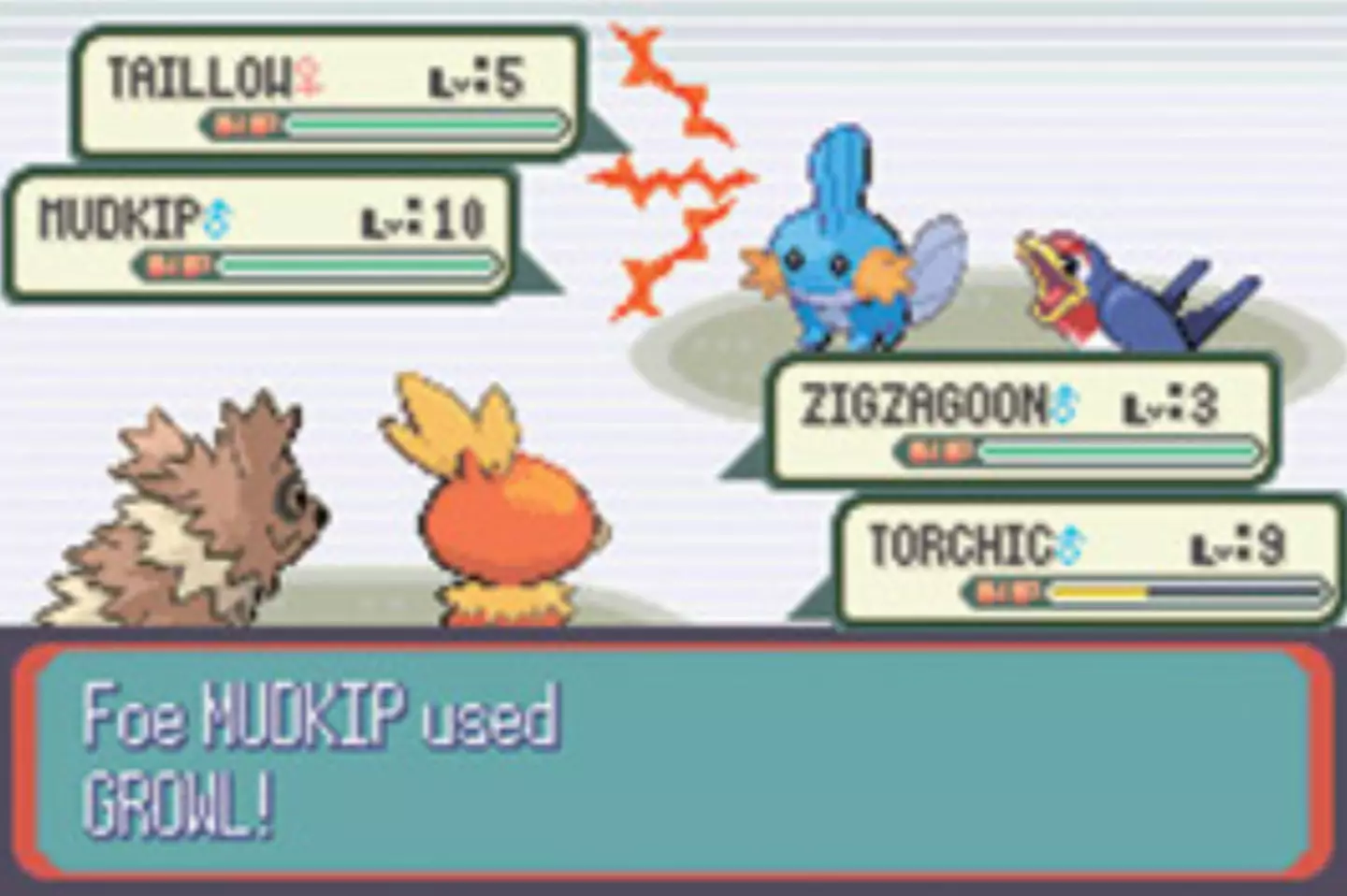
Pokémon Ruby and Sapphire are now almost 20 years old, if you can believe it. The third generation games took players to the vibrant Hoenn region, and as well as introducing the world to the best green dragon noodle (Rayquaza) and making sure that children all over the globe knew that climate change is serious s**t, the games also added a whole bunch of changes that the newer generation games would be absolutely nothing without.
Nowadays, it’s the norm for a new ‘gimmick’ to be introduced to each generation. Sun and Moon’s Z-Moves, for example, served to spice up battles a bit in the seventh generation, but haven’t been seen since. At the time of writing, it doesn’t seem like Dynamaxing from Sword and Shield will be incorporated in Scarlet and Violet, and X and Y’s Mega Evolutions still appear to be totally absent, too. In short, additions to the modern games tend to be more fleeting - new mechanics make the battling experience a little different between games, but don’t often have much of a lasting legacy on the future of the series.
While you're here, be sure to take a look at the trailer for Pokémon Scarlet and Violet.
Perhaps that’s part of why Ruby and Sapphire’s inclusions feel a bit more special. The two features that probably immediately spring to mind for most are weather and Double Battles, thanks to their importance in the 2002 games. Weather was pretty much Hoenn’s main deal - the box legendaries, as well as Team Aqua and Magma, were all based around the environment and their impact on the region’s weather conditions (that part of the story when the heavy rain/drought begins setting in with the ominous music is still one of my favourite moments in the entire series). The mechanic has returned in every game since - serving both to make in-game locations more interesting, and to bring new strategies to battle.
Advert
Double Battles are also now a series staple. The two-vs-two battle format forced players to completely rethink how to approach fights - suddenly, we had to consider using moves that could hit multiple targets, using one Pokémon’s moves to aid their battle partner, and choose which of the enemy’s team members to focus on first. In a series first, the Mossdeep Gym fight was also a Double Battle, and although it’s fair to say that Tate and Liza’s team in Ruby and Sapphire left something to be desired (perhaps the many Swamperts with Surf would beg to differ), it was still incredibly cool to see Gyms do something a bit different for once.
As important as these two things are, however, there are a couple of other features that now feel so intrinsic to the series, it’s genuinely easy to forget that they weren’t always included. I’m talking about Natures and Abilities - both mechanics that help make each and every Pokémon you catch feel so much more unique, and have a huge influence on what makes a Pokémon ‘good’.
Depending on how seriously you take your monster-catching experience will strongly sway how much you care about Natures. As a kid, I looked at the traits such as Quiet, Bashful, Sassy and Brave and used them solely to determine what my team members’ personalities were like, but in reality, of course, this is just a fun way of giving every Pokémon a stat-modifier. There are 25 in total - most boost a single stat by 10% and reduce another by 10% (some are neutral and don’t apply any changes at all), and can be a make-or-break deal in what makes your particular ‘mon any good in battle. I mean, in a regular playthrough, your life isn’t going to be hell if your Metagross just so happens to have a Speed-boosting and Attack-reducing Nature, but in competitive battling, it’s a totally different story - you’ll never see a single person running a team with less-than-perfect stat spreads.

The same goes for Abilities. Prior to the release of Scarlet and Violet, there are over 250 of them, and they can have a big impact both inside and outside of battle - many species have their own signature Abilities which make their battling style totally distinct (just look at Castform, whose Forecast Ability makes it change its type and appearance in different weather conditions), while other species can be caught with an assortment of different Abilities, generally with varying usefulness.
Advert
This is where even less serious players probably pay more attention to the Pokémon they put on their team - why would you want to use a Wooloo with Run Away (which allows the user guaranteed escape from wild battles) when you could have one with the far more battle-practical Fluffy Ability, which halves damage from direct-contact moves? Okay, admittedly, Fluffy also doubles damage taken from Fire-type moves, which isn’t ideal, but you get the point.
Meanwhile, on the competitive scene, players are able to build entire sets (and even full teams) around certain Abilities’ effects - they play a massive role in strategies, and often make it so that the same Pokémon can be used in completely different ways. Take Excadrill - its Sand Rush Ability can turn the Pokémon into a speedy sweep attacker in a Sandstorm, whereas it can also use the Mold Breaker Ability to ensure it can land status moves like Stealth Rock, helping it focus on assisting the rest of the team rather than dishing out the bulk of damage.
Regardless of if you’re a competitive player or just enjoy casually adventuring through the different regions with your favourite Pokémon, as I mentioned before, both Abilities and Natures play a substantial part in making each Pokémon seem more like your own - on paper, they might just be extra variables, but those differences are what set your Lotad apart from your friend’s or some random NPC’s. As cliche as it might sound, at its core, one of the main things about the Pokémon series is befriending these cute and powerful creatures and seeing them grow, and to me, that experience feels so much more rewarding when your team members seem distinctive and special - it’s way easier to get attached to them (yes, I am the sort of person who gets very emotionally invested in Nuzlocke challenges).
I replay the older Pokémon games fairly regularly (my backlog hates me for it), and I notice each time how I’m less attached to my teams in the original Kanto and Johto games than I am those from generation three onwards, and I have no doubt that these often-overlooked additions are behind that. So thank you, Ruby and Sapphire, for not only making competitive battling what it is today, but also making every single Pokémon feel like more of a friend. Oh, and also for adding the Running Shoes, because good lord did we need those.
Featured Image Credit: The Pokémon Company, Nintendo